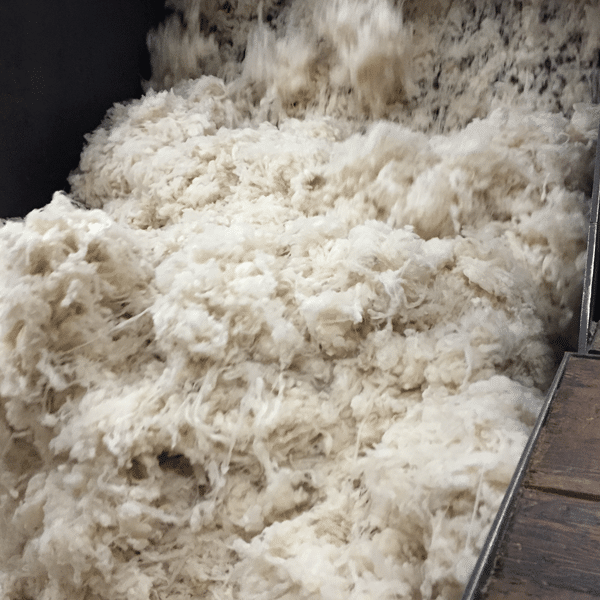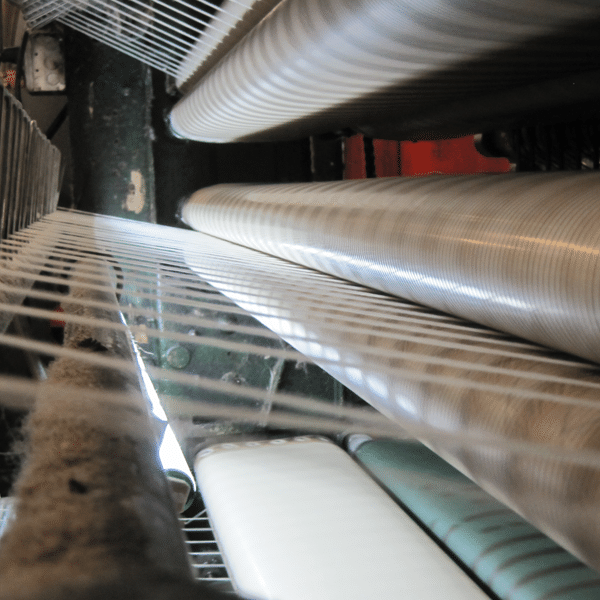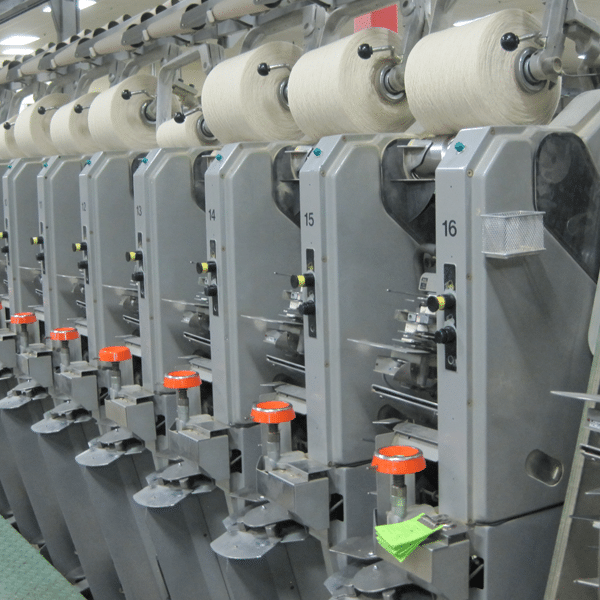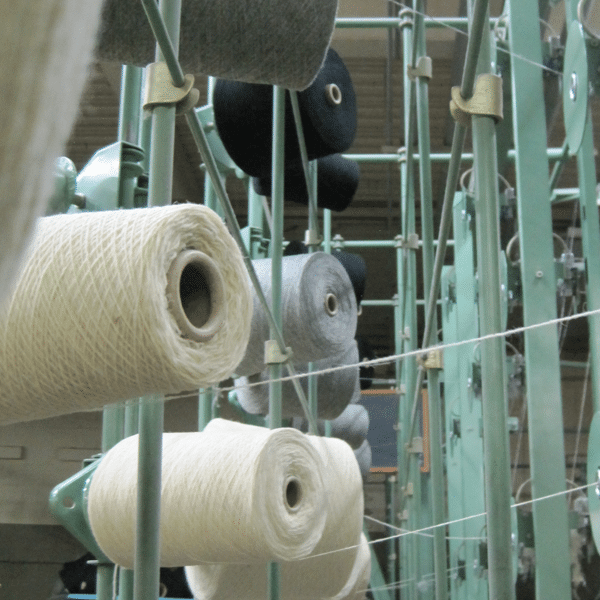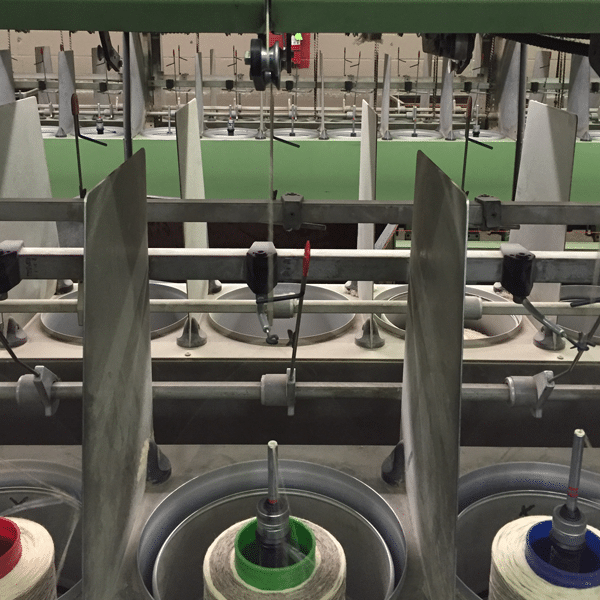Crescent Woolen Mills converts natural and synthetic fibers into spun yarn on the woolen system in its 98,000 square foot manufacturing space. The quality of raw fibers is inspected and the spinning process is controlled and monitored under one roof, using state-of-the-art equipment from around the world.
Woolen System Spinning
The woolen spinning system involves six distinct processes to convert fiber into yarn:

